Related Research Articles

Fra Angelico, OP was a Dominican friar and Italian Renaissance painter of the Early Renaissance, described by Giorgio Vasari in his Lives of the Artists as having "a rare and perfect talent". He earned his reputation primarily for the series of frescoes he made for his own friary, San Marco, in Florence, then worked in Rome and other cities. All his known work is of religious subjects.
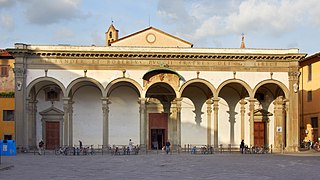
The Basilica della Santissima Annunziata is a Renaissance-style, Catholic minor basilica in Florence, region of Tuscany, Italy. This is considered the mother church of the Servite Order. It is located at the northeastern side of the Piazza Santissima Annunziata near the city center.

The Church of the Gesù is the mother church of the Society of Jesus (Jesuits), a Catholic religious order. Officially named Chiesa del Santissimo Nome di Gesù, its façade is "the first truly baroque façade", introducing the baroque style into architecture. The church served as a model for innumerable Jesuit churches all over the world, especially in the central Europe and then in the Portuguese colonies. Its paintings in the nave, crossing, and side chapels became models for Jesuit churches throughout Italy and Europe, as well as those of other orders. The Church of the Gesù is located in the Piazza del Gesù in Rome.

Alessandro Bonvicino, more commonly known as Moretto, or in Italian Il Moretto da Brescia, was an Italian Renaissance painter from Brescia, where he also mostly worked. His dated works span the period from 1524 to 1554, but he was already described as a master in 1516. He was mainly a painter of altarpieces that tend towards sedateness, mostly for churches in and around Brescia, but also in Bergamo, Milan, Verona, and Asola; many remain in the churches they were painted for. The majority of these are on canvas, but a considerable number, including some large pieces, are created on wood panels. There are only a few surviving drawings from the artist.
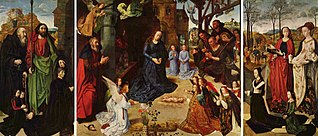
The Portinari Altarpiece or Portinari Triptych is an oil-on-wood triptych painting by the Flemish painter Hugo van der Goes, commissioned by Tommaso Portinari, representing the Adoration of the Shepherds. It measures 253 x 304 cm, and is now in the Galleria degli Uffizi in Florence, Italy. This altarpiece is filled with figures and religious symbols. Of all the late-fifteenth-century Flemish artworks, this painting is said to be the most studied.

Raffaellino del Garbo (1466–1527) was a Florentine painter of the early Renaissance.

Santa Maria dei Miracoli and Santa Maria di Montesanto are two churches in Rome.

Santa Maria in Vallicella, also called Chiesa Nuova, is a church in Rome, Italy, which today faces onto the main thoroughfare of the Corso Vittorio Emanuele and the corner of Via della Chiesa Nuova. It is the principal church of the Oratorians, a religious congregation of secular priests, founded by St Philip Neri in 1561 at a time in the 16th century when the Counter Reformation saw the emergence of a number of new religious organisations such as the Society of Jesus (Jesuits), the Theatines and the Barnabites.

The Baronci Altarpiece was a painting by the Italian High Renaissance artist Raphael. His first recorded commission, it was made for Andrea Baronci's chapel in the church of Sant'Agostino in Città di Castello, near Urbino. The altarpiece was seriously damaged during an earthquake in 1789, and since 1849 fragments of the original painting have been part of different collections.
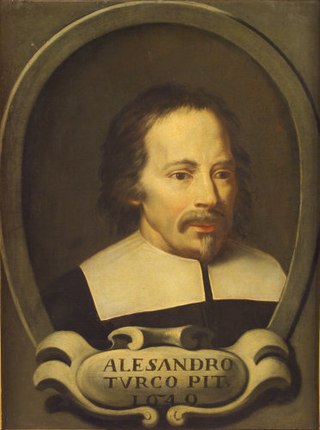
Alessandro Turchi was an Italian painter of the early Baroque, born and active mainly in Verona, and moving late in life to Rome. He also went by the name Alessandro Veronese or the nickname L'Orbetto. His style has been described as soft and Caravaggesque at the same time.

Pietro Negroni, also called Il Giovane Zingaro and Lo zingarello di Cosenza, was an Italian painter of the Renaissance period, active mainly in Naples. He was known for his altarpieces, mythological scenes and portraits.

Ludovico Gimignani was an Italian painter, who is mainly known for his altarpieces for churches in Rome.
Vincenzo Pagani was an Italian painter of the Renaissance period.

The Pala delle Convertite or The Trinity with Saints Mary Magdalen and John the Baptist, or Holy Trinity, is an altarpiece by the Italian Renaissance painter Sandro Botticelli and his workshop, traditionally dated to c. 1491–1493. It is now in the Courtauld Gallery in London. It is now thought the painting was begun much earlier, perhaps in the 1470s, and was worked on during three decades.
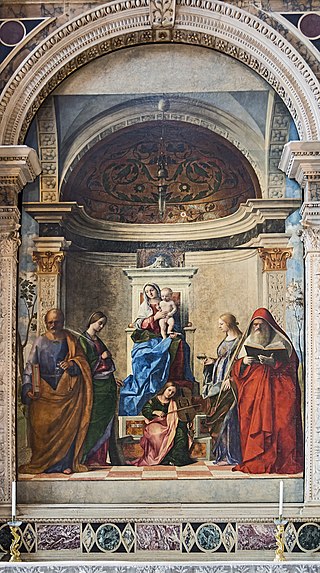
The San Zaccaria Altarpiece is a painting by the Italian Renaissance painter Giovanni Bellini, executed in 1505 and located in the church of San Zaccaria, Venice.

The San Giobbe Altarpiece is a c. 1487 altarpiece in oils on panel by the Venetian Renaissance painter Giovanni Bellini. Inspired by a plague outbreak in 1485, this sacra conversazione painting is unique in that it was designed in situ with the surrounding architecture of the church, and was one of the largest sacra conversazione paintings at the time. Although it was originally located in the Church of San Giobbe, Venice, it is now in the Gallerie dell'Accademia in Venice after having been stolen by Napoleon Bonaparte.

St. Luke's Church is a Church of Denmark church located in the Frederiksberg district of Copenhagen, Denmark. Completed in 1897 to the design of Valdemar Koch, who also built several other churches in Copenhagen around that time, it is the second oldest church in Frederiksberg.
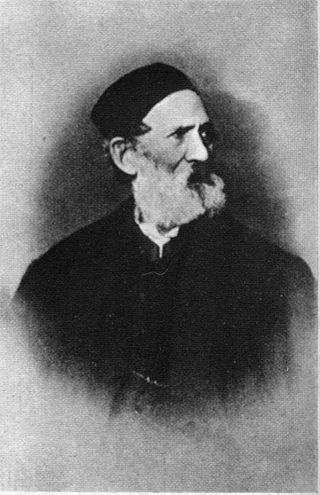
Adeodato Malatesta was an Italian painter, trained in a grand Neoclassical style, depicting mostly of sacred and historic subjects.

Cosroe Dusi was an Italian painter in the Neoclassical style, active for many years in St Petersburg, Russia, painting mainly sacred and historical subjects. Dusi was nicknamed by his contemporaries the "modern Tintoretto", for his liveliness of invention and rapidity at painting.

Church of the Holy Apostles Peter and Paul, known as the Topčider Church is the Serbian Orthodox Church, located in Topčider park, in the municipality of Savski Venac in Belgrade, the capital of Serbia. Built between 1832 and 1834, it was an endowment of Prince Miloš Obrenović, who was also its founder. It is located next to the Residence of Prince Miloš. The church was declared a cultural monument and protected by the state in 1949.
References
- Heikki Hanka, a hundred angel's church, Ilomantsi image of the Church for two centuries, Minerva 2003